Have you ever heard of Catanduanes? This mesmerizing island province in the Philippines is a hidden gem waiting to be explored. With its stunning natural beauty, intriguing history, and warm hospitality, Catanduanes is a destination that should be on every traveler’s radar. But where exactly is Catanduanes located? Let’s uncover the answer.
Catanduanes is situated in the Bicol Region of Luzon, one of the major islands in the Philippines. As the 12th-largest island in the country, Catanduanes boasts picturesque landscapes that will leave you in awe. Its geographical coordinates are between 13.83°N and 124.25°E. The province is bordered by the Maqueda Channel to the east and Camarines Sur to the west, offering breathtaking views of the surrounding waters.
Key Takeaways:
- Catanduanes is an island province located in the Bicol Region of Luzon in the Philippines.
- It is the 12th-largest island in the country and offers stunning natural beauty.
- Virac is the capital and largest municipality of Catanduanes.
- The province is bordered by the Maqueda Channel to the east and Camarines Sur to the west.
- Discover the hidden gem of Catanduanes and experience its warm hospitality and enchanting landscapes.
Overview of Catanduanes Province
Catanduanes is a province in the Philippines that is often referred to as “The Happy Island” and “Abaca Capital of the Philippines.” It has earned these nicknames due to its picturesque tourist spots, including pristine beaches, stunning waterfalls, and lush forests. The province is also known for its abaca production, which is a major industry in the region. As for the weather, Catanduanes experiences a tropical climate with no pronounced dry season. It is advisable to check weather reports before planning a trip to the province.
Explore the beauty of Catanduanes Province:
Pristine Beaches
Catanduanes is home to a range of stunning beaches that are perfect for relaxation and water activities. From sandy shores lined with palm trees to secluded coves with crystal-clear waters, there is a beach for every preference. Some popular tourist spots include Puraran Beach, known for its powerful waves and excellent surfing conditions, and Balite Beach, which offers a serene and tranquil atmosphere.
Breathtaking Waterfalls
Immerse yourself in nature by visiting the breathtaking waterfalls of Catanduanes. Marvel at the cascading waters of Maribina Falls, nestled amidst lush greenery and rock formations. Discover the hidden gem of Nahulugan Falls, where you can take a refreshing dip in the clear pool beneath the waterfall.
Lush Forests
Catanduanes is blessed with lush forests that are perfect for hiking and exploring. Discover the diverse flora and fauna that thrive in these ecosystems, from towering trees to exotic wildlife. Explore the Batag Forest, which is home to various endemic species, or venture into the Talisoy Forest and witness the stunning biodiversity up close.
Plan Your Visit with a Catanduanes Travel Guide
To make the most of your trip to Catanduanes, it’s helpful to have a travel guide that provides essential information about the province. A comprehensive Catanduanes travel guide can help you navigate the best tourist spots, plan your itinerary, and provide tips on transportation, accommodations, and local customs. With a travel guide in hand, you can experience the beauty and wonder of Catanduanes with ease.
Catanduanes Weather: What to Expect
When planning your visit to Catanduanes, it’s crucial to consider the weather conditions. The province experiences a tropical climate, which means warm temperatures throughout the year. The absence of a pronounced dry season means that rain showers can occur at any time. It’s advisable to check the weather forecast before your trip and pack accordingly, including rain gear for unexpected showers.
Month Average Temperature (°C) Average Rainfall (mm) January 25-30 200 February 25-30 150 March 26-31 150 April 27-32 100 May 27-32 100 June 26-31 150
Historical Background of Catanduanes
Catanduanes, a province with a rich historical background, has witnessed significant milestones in its journey. Originally a sub-province of Ambos Camarines, it later became a sub-province of Albay, eventually gaining autonomy and becoming an independent province on September 26, 1945. Throughout its history, Catanduanes has seen changes in governance and leadership, with notable individuals playing pivotal roles in its development.
“The history of Catanduanes is a testament to the resilience and determination of its people. From being a sub-province to achieving independence, Catanduanes’ journey exemplifies the spirit of progress and growth.”
Under various leaders and administrations, Catanduanes has flourished culturally, economically, and socially. The province has embraced its historical roots while keeping an eye on the future. Today, Catanduanes stands as a separate and independent province, celebrating its rich heritage and continuing to thrive in all aspects of life.
Notable Figures in Catanduanes’ History
Several notable figures have left their mark on Catanduanes’ history, influencing its development and progress:
- Jose Perfecto – A prominent political figure and public servant who played a vital role in paving the way for Catanduanes to become an independent province.
- Ramon Abonal – Known as the “Father of Catanduanes Province,” he passionately advocated for the province’s autonomy and development.
- Leandro Verceles – A highly regarded historian who diligently researched and documented Catanduanes’ past, preserving its rich cultural heritage.
These individuals, among many others, have contributed to the identity and progress of Catanduanes, leaving a lasting legacy for future generations.
The Significance of Catanduanes’ History
The historical background of Catanduanes serves as a source of pride and inspiration for its residents. It is a reminder of their resilience in overcoming challenges and a testament to their ability to adapt and thrive. The province’s history also contributes to its cultural heritage, offering insights into the traditions, customs, and values that have shaped Catanduanes into what it is today.
Catanduanes’ rich history is an integral part of its identity, further enhancing its appeal as a destination for travelers seeking an authentic and immersive experience. Exploring the province’s historical sites and engaging with its vibrant culture allows visitors to connect with the past and appreciate the journey that has led Catanduanes to its present state.
Geographical Features of Catanduanes
Catanduanes, located in the Bicol Region of the Philippines, is renowned for its unique geography and breathtaking natural landscapes. The province’s topography is characterized by rugged mountain ranges, stunning coastlines, and picturesque bays that make it a paradise for nature lovers and adventurers alike.
The central portion of the island encompasses the majority of its mountainous terrain, with the highest peak being Mount Tamboo, towering at an impressive elevation of 695 meters above sea level. These majestic mountains provide a dramatic backdrop against the azure skies, offering magnificent vistas and opportunities for hiking and exploration.
Stretching for nearly 400 kilometers, Catanduanes boasts jagged coastlines that meet the pristine waters of the Maqueda Channel to the west and the Philippine Sea to the north and east. These diverse coastlines are adorned with golden sandy beaches, hidden coves, and rocky cliffs that create a mesmerizing tapestry of natural beauty.
“Catanduanes is a treasure trove of geographical wonders, with its rugged mountains and captivating coastlines. Whether you seek adventure or tranquility, this province has it all.”
The province’s rich topography and diverse coastline offer a wealth of outdoor activities and attractions. From leisurely beach strolls to thrilling water sports like surfing and snorkeling, Catanduanes provides countless opportunities to immerse yourself in the beauty of its natural surroundings.
With its breathtaking geography, Catanduanes truly lives up to its reputation as an enchanting destination where the wonders of the land and sea converge.
| Geographical Features | Description |
|---|---|
| Mountain Ranges | The central portion of the island is dominated by rugged mountain ranges, with Mount Tamboo being the highest peak at 695 meters above sea level. |
| Coastlines | Catanduanes boasts approximately 400 kilometers of jagged coastlines, offering a blend of sandy beaches, rocky cliffs, and hidden coves. |
| Bays | The province is dotted with numerous bays, providing scenic beauty and serving as natural harbors for fishing communities. |
| Surrounding Waters | The Maqueda Channel borders Catanduanes to the west, while the province is surrounded by the Philippine Sea to the north and east. |
Flora and Fauna of Catanduanes
Catanduanes, an enchanting island province in the Philippines, is not only known for its stunning landscapes and warm hospitality but also for its rich biodiversity. The island is a haven for nature lovers and researchers, as it is home to a diverse range of flora and fauna.
The lush old-growth forests of Catanduanes are teeming with a wide array of plant life. These forests serve as habitats for various species, including endemic and unique plants that are found exclusively in the region. From towering trees to vibrant flowers, Catanduanes flora showcases the island’s natural beauty and ecological significance.
In addition to its impressive plant life, Catanduanes is also home to a variety of animal species. The island’s fauna includes mammals, birds, reptiles, and marine life. Exploring the province’s forests and coastal areas offers opportunities to encounter fascinating creatures such as the Philippine warty pig, the Catanduanes bleeding-heart dove, and the critically endangered Philippine crocodile.
One notable aspect of Catanduanes’ biological richness is its fossil sites. The province is home to several mollusk fossil sites, where researchers have made significant discoveries. Catanduanes is particularly recognized for its ammonite fossils, some of which are unique to the region. These fossils provide valuable insights into the island’s geological history.
The importance of preserving Catanduanes’ biodiversity cannot be overstated. Conservation efforts are vital to safeguard the island’s flora and fauna, ensuring that future generations can continue to appreciate and benefit from its natural resources. Through sustainable practices and environmental awareness, Catanduanes can maintain its status as a vibrant biodiversity hotspot.
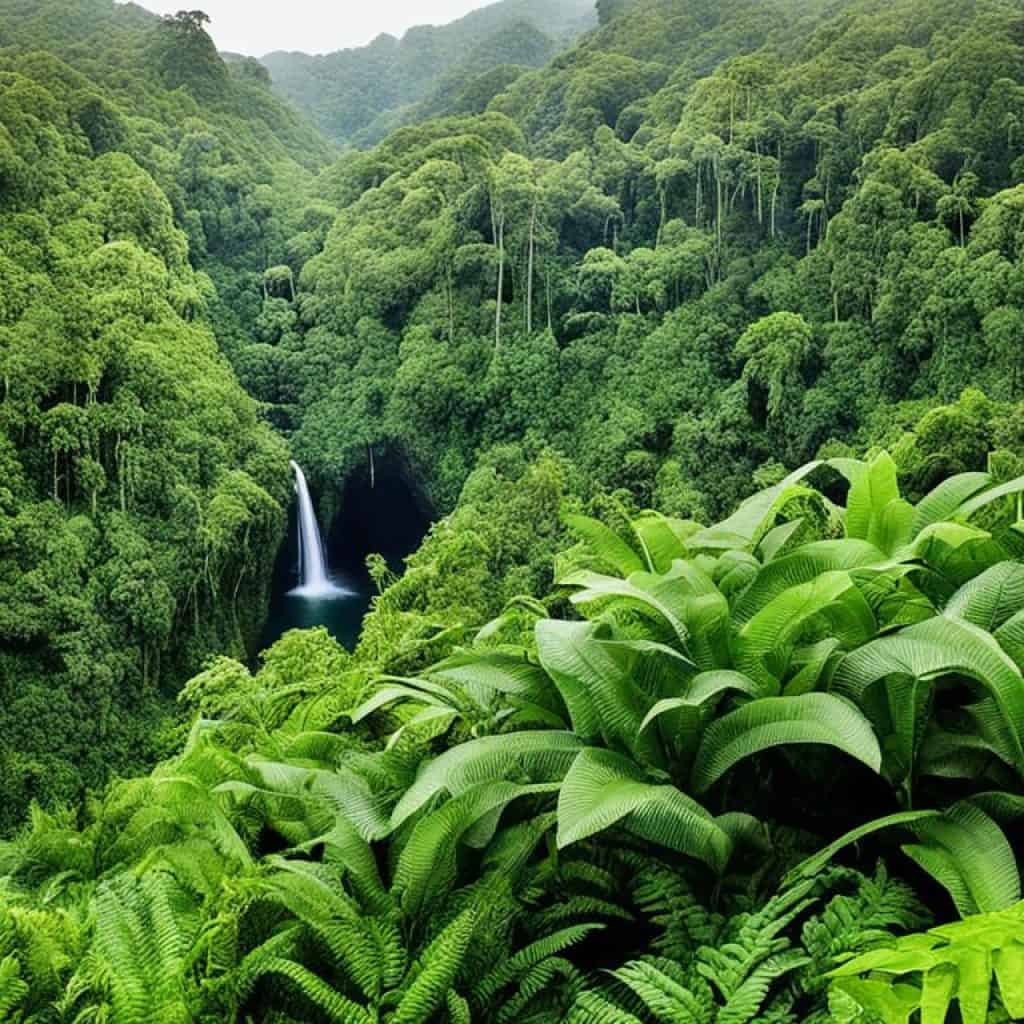
From the vibrant forests to the diverse animal species, Catanduanes offers a captivating experience for nature enthusiasts and researchers alike. Witness the beauty of the island’s flora and fauna, and immerse yourself in the wonders of Catanduanes’ biodiversity.
Getting to Catanduanes
Planning a trip to the beautiful island of Catanduanes? Here’s a guide on how to get to this captivating destination.
Flights to Catanduanes
The fastest and most convenient way to reach Catanduanes is by taking a flight to Virac Airport. Several airlines offer direct flights from Manila to Virac, ensuring a smooth and hassle-free journey. The flight duration is approximately one hour, providing you with ample time to relax and enjoy the scenic views from above.
Bus and Ferry Options
If you prefer a more adventurous route, you can opt for a combination of bus and ferry travel. Fly to Legazpi in Albay and then head to the bus terminals near the airport. Buses regularly ply the Manila-Virac route, providing a comfortable and affordable transportation option. After a scenic bus journey through picturesque landscapes, you’ll reach the port where you can board a ferry to Catanduanes. Although this option takes longer, it offers a unique and memorable travel experience.
Traveling by Ferry
For those who enjoy seafaring adventures, traveling by ferry is an exciting option. Although it involves multiple transfers, it allows you to explore different destinations along the way. From Manila, take a ferry to Cebu and then another ferry to Masbate. Finally, board a ferry to Catanduanes, where you’ll be greeted by the island’s warm charm and natural beauty.
| Transportation Mode | Pros | Cons |
|---|---|---|
| Flights to Virac | Fast and convenient | Slightly more expensive |
| Bus and Ferry | Scenic journey, affordable | Longer travel time |
| Traveling by Ferry | Explore different destinations | Multiple transfers |
Exploring Virac, the Capital of Catanduanes
When visiting Catanduanes, the capital city of Virac is a must-visit destination. Located in the heart of the province, Virac serves as the gateway to an array of attractions and natural wonders. Exploring this charming city promises a delightful experience that combines history, architecture, and warm hospitality.
Historical Charm and Architectural Marvels
One of the standout attractions in Virac is the Cathedral of Our Lady of the Immaculate Conception. This magnificent Spanish colonial-era church is a testament to the city’s rich history and architectural heritage. Its grandeur and intricate details make it a captivating sight for visitors and a cherished place of worship for the locals.
Virac, the capital and largest municipality of Catanduanes, serves as a hub for exploring the rest of the province.
Accommodations for Every Traveler
Virac offers a range of accommodations to suit every traveler’s needs and preferences. From luxury resorts with breathtaking views to cozy budget-friendly guesthouses, there are options for every budget. Whether you prefer beachfront resorts or centrally located hotels, Virac has something to offer for a comfortable and memorable stay.
Exploring the Rest of Catanduanes
Virac’s central location makes it an ideal base for travelers looking to explore the rest of Catanduanes. From here, you can easily venture out to discover the province’s top attractions and natural wonders. Whether you’re seeking pristine beaches, majestic waterfalls, or picturesque landscapes, Virac’s strategic position ensures easy access to these breathtaking destinations.
Where to Stay in Virac
If you’re planning to stay in Virac, consider these popular accommodations:
- ABC Resort: A beachfront resort that offers luxurious amenities and stunning views of the ocean.
- Virac Hotel: Located in the city center, this hotel provides convenience and comfortable accommodations.
- Palm Garden Resort: A tranquil resort nestled amidst lush greenery, offering a serene escape from the bustling city.
With its historical charm, convenient location, and varied accommodations, Virac is an excellent starting point for your Catanduanes adventure. Explore the city, immerse yourself in its rich culture, and get ready to discover the wonders that await you in this enchanting province.
Must-Visit Tourist Spots in Catanduanes
Catanduanes, known for its picturesque landscapes and natural wonders, offers a treasure trove of must-visit tourist spots. Whether you’re a beach lover, a nature enthusiast, or a history buff, Catanduanes has something for everyone to enjoy.
1. Pristine Beaches:
- Mamangal Beach: With its powdery white sand, crystal-clear waters, and peaceful ambiance, Mamangal Beach is the perfect spot for relaxation and beach picnics.
- Puraran Beach: Renowned for its majestic waves, Puraran Beach is a surfer’s paradise. Adventurous surfers from across the globe flock to this beach to ride its famous “The Majestic” waves.
2. Breathtaking Waterfalls:
- Maribina Falls: Tucked away in the heart of Catanduanes’ lush forests, Maribina Falls captivates visitors with its cascading waters and serene atmosphere, offering a refreshing escape from the tropical heat.
- Nahulugan Falls: Surrounded by verdant foliage, Nahulugan Falls presents a picturesque setting where visitors can enjoy the beauty of nature and take a refreshing dip in its cool emerald waters.
3. Notable Tourist Spots:
- Balite Beach: Boasting a unique charm and tranquil ambiance, Balite Beach is a hidden gem known for its pristine shores and breathtaking sunset views.
- Batag Beach: Nestled along the coastline, Batag Beach is a haven for beachcombers, offering serene surroundings, gentle waves, and beautiful seashells waiting to be discovered.
- Talisoy Beach: With its powdery white sand and turquoise waters, Talisoy Beach is a paradise for beach lovers. Its tranquil atmosphere and untouched beauty make it an ideal destination for relaxation.
“Catanduanes is home to a rich history and heritage displayed in its remarkable landmarks. Don’t miss the chance to visit the historical Batalay Church in Bato, known for its Baroque architecture and cultural significance.”
Immerse yourself in the natural wonders of Catanduanes and explore its pristine beaches, captivating waterfalls, and historical landmarks. The breathtaking beauty of these attractions promises an unforgettable journey through the heart of this enchanting province.
Experience the allure of Catanduanes’ natural wonders, from stunning coastlines to majestic waterfalls.
Catanduanes’ rich culture and heritage can be experienced through its churches and cultural sites. The province is dotted with beautiful churches, such as the Cathedral of Our Lady of the Immaculate Conception in Virac, which showcases the province’s strong Catholic heritage. Other notable churches include the Batalay Church in Bato and the Church of St. John the Baptist in Bato. Visitors can also explore museums and cultural centers to learn more about the island’s history and traditions.
“Catanduanes’ churches stand as testaments to the island’s vibrant culture and long-standing traditions. The ornate architecture and religious significance of these sacred sites offer a glimpse into the past and a deeper understanding of the community’s values. Visitors can marvel at the intricate details of the Cathedral of Our Lady of the Immaculate Conception, indulge in moments of reflection at the Batalay Church, and appreciate the cultural significance of the Church of St. John the Baptist. Exploring these churches is a captivating journey through Catanduanes’ rich heritage.”
Exploring Museums and Cultural Centers
Aside from churches, Catanduanes also offers a range of museums and cultural centers where visitors can delve deeper into the island’s history and local arts. The Catanduanes State University Museum in Virac showcases various artifacts and exhibits that highlight the province’s cultural heritage. It is an ideal place to learn about indigenous crafts, traditional practices, and the island’s natural wonders.
The Lantern Parade and Gallery in Bagamanoc is another cultural attraction that celebrates the local artistry. This gallery showcases intricate lantern designs made by talented artisans, and visitors can witness the vibrant Lantern Parade during the holiday season.
Cultural Festivals
To fully immerse in Catanduanes’ culture, visitors should plan their trip during one of the province’s vibrant festivals. The Abaca Festival, held annually in Catanduanes, celebrates the island’s main agricultural product, abaca fiber. This festival showcases cultural performances, street parades, and exhibits that highlight the significance of abaca in the province.
During the Pawikan Festival, locals and tourists gather to celebrate the conservation of sea turtles, which are abundant in the waters surrounding Catanduanes. This festival aims to raise awareness about marine conservation efforts and promote the protection of these majestic creatures.
| Festival | Date | Location |
|---|---|---|
| Abaca Festival | May 1-31 | Catanduanes Provincewide |
| Pawikan Festival | November 19-21 | Pandan, Catanduanes |
| Biniray Festival | December 31 | Puraran Beach, Baras |
These festivals provide a unique opportunity to witness traditional dances, music, and ceremonies, allowing visitors to fully embrace the vibrant culture of Catanduanes.
Culinary Delights of Catanduanes
Catanduanes, a province known for its natural beauty, also offers a delightful culinary experience. The local cuisine showcases the island’s rich seafood and traditional dishes, providing a unique and flavorful dining experience.
When it comes to seafood, Catanduanes is a haven for seafood lovers. The province is known for its fresh fish, crabs, and lobsters, which are caught from the surrounding waters. These locally sourced ingredients guarantee the freshness and quality of the seafood dishes.
One must-try dish that perfectly represents the flavors of Catanduanes is Bicol Express. This iconic dish features tender pork cooked with coconut milk and a touch of spiciness from chili peppers. The combination of creamy coconut milk and fiery chili creates a harmonious balance that tantalizes the taste buds.
In addition to Bicol Express, Catanduanes is also famous for its local delicacies. One such delicacy is Sinapot, a traditional dessert that showcases the region’s culinary heritage. Sinapot is made from sticky rice soaked in coconut milk and sweetened with brown sugar. This delectable treat offers a delightful combination of textures and flavors, making it a favorite among locals and visitors alike.
Another local specialty worth trying is Tiyosko, a type of sticky rice cake. Tiyosko is made from glutinous rice, coconut milk, and sugar, resulting in a chewy and sweet delicacy. It is often enjoyed as a snack or dessert, perfect for satisfying any sweet cravings.
Catanduanes’ cuisine is a true reflection of the island’s natural resources and cultural heritage. The abundance of fresh seafood, flavorful spices, and traditional cooking techniques create a diverse menu that showcases the province’s culinary prowess.
Sample Table:
| Local Dish | Description | Image |
|---|---|---|
| Bicol Express | A spicy pork dish cooked with coconut milk and chili peppers, creating a flavorful and creamy sauce. | |
| Sinapot | A traditional dessert made from sticky rice soaked in coconut milk and sweetened with brown sugar, offering a delightful combination of textures and flavors. | |
| Tiyosko | A sticky rice cake made from glutinous rice, coconut milk, and sugar, providing a chewy and sweet delicacy. |
Practical Information and Travel Tips for Catanduanes
When planning your trip to Catanduanes, it’s important to have some practical information and travel tips in mind. These tips will help you make the most of your visit and ensure a smooth and enjoyable experience on this enchanting island.
Check the Weather
Before you pack your bags and head to Catanduanes, make sure to check the weather forecast. The province can be affected by typhoons, so it’s crucial to be aware of the current weather conditions. This will help you plan your activities and make any necessary adjustments to your itinerary.
Plan Your Transportation
Catanduanes can be reached through various modes of transportation. It is recommended to plan your transportation in advance, considering the different options available. You can choose to fly directly to Virac Airport from Manila or take a flight to Legazpi in Albay and then continue your journey by bus and ferry. Another option is traveling by bus from Manila to Virac. If you prefer a scenic route, you can also opt for a ferry ride with multiple transfers.
Pack Appropriately
When packing for your trip to Catanduanes, it’s important to bring appropriate clothing for the tropical climate. Lightweight and breathable fabrics are highly recommended, along with comfortable footwear for exploring the island’s natural wonders. Don’t forget to pack essentials such as sunscreen, insect repellent, and a hat to protect yourself from the sun.
Respect Local Customs and the Environment
As a visitor to Catanduanes, it is important to respect the local customs and traditions. Be mindful of the cultural sensitivities of the island and engage with the locals in a respectful manner. Additionally, practice responsible tourism by being mindful of the environment. Dispose of your waste properly and leave no trace when exploring the province’s natural attractions.
Stay Hydrated and Take Precautions
Exploring Catanduanes may involve outdoor activities and adventures. It is essential to stay hydrated by drinking plenty of water throughout the day, especially in the tropical climate. Take necessary precautions such as wearing appropriate attire, applying sunscreen, and carrying a bottle of water with you at all times. It’s also a good idea to have a basic first aid kit handy for any minor injuries or discomfort you may encounter during your trip.
By keeping these practical information and travel tips in mind, you can have a fantastic and hassle-free experience in Catanduanes. Now it’s time to get ready for your journey to this beautiful island!
Sample Itinerary for Exploring Catanduanes
Planning a trip to Catanduanes? Having a sample itinerary can help you make the most out of your visit to this beautiful island province. Here’s a suggested 4-day itinerary that will allow you to explore the best that Catanduanes has to offer:
Day 1:
Arrival in Virac, the capital of Catanduanes. Start your exploration by visiting the cultural sites in Virac, such as the Cathedral of Our Lady of the Immaculate Conception. Immerse yourself in the rich history and heritage of the province. Afterward, head to the nearby beaches and enjoy the pristine coastline.
Day 2:
Embark on a day trip to Maribina Falls and Nahulugan Falls, two picturesque waterfalls that showcase the natural beauty of Catanduanes. Take a refreshing dip in the cool waters and soak in the tranquil atmosphere of these hidden gems. Don’t forget to capture some stunning photos!
Day 3:
Spend the day beach-hopping along the coast of Catanduanes. Start your beach adventure at Puraran Beach, famous for its pristine white sand and excellent surfing conditions. Whether you’re a seasoned surfer or a beginner, riding the waves at Puraran Beach is an experience not to be missed. Continue exploring the nearby beaches and enjoy the sun, sand, and sea.
Day 4:
On your last day in Catanduanes, take some time to visit the historical landmarks and notable attractions in the province. Explore Bato Church, a centuries-old church that stands as a testament to the province’s rich cultural heritage. Take a leisurely stroll around the charming town before bidding farewell to Catanduanes.
This sample itinerary offers a good balance of cultural immersion, outdoor activities, and relaxation. However, feel free to customize your itinerary based on your preferences and interests. Catanduanes has so much to offer, and this sample itinerary serves as a starting point for your unforgettable adventure in this enchanting island province.
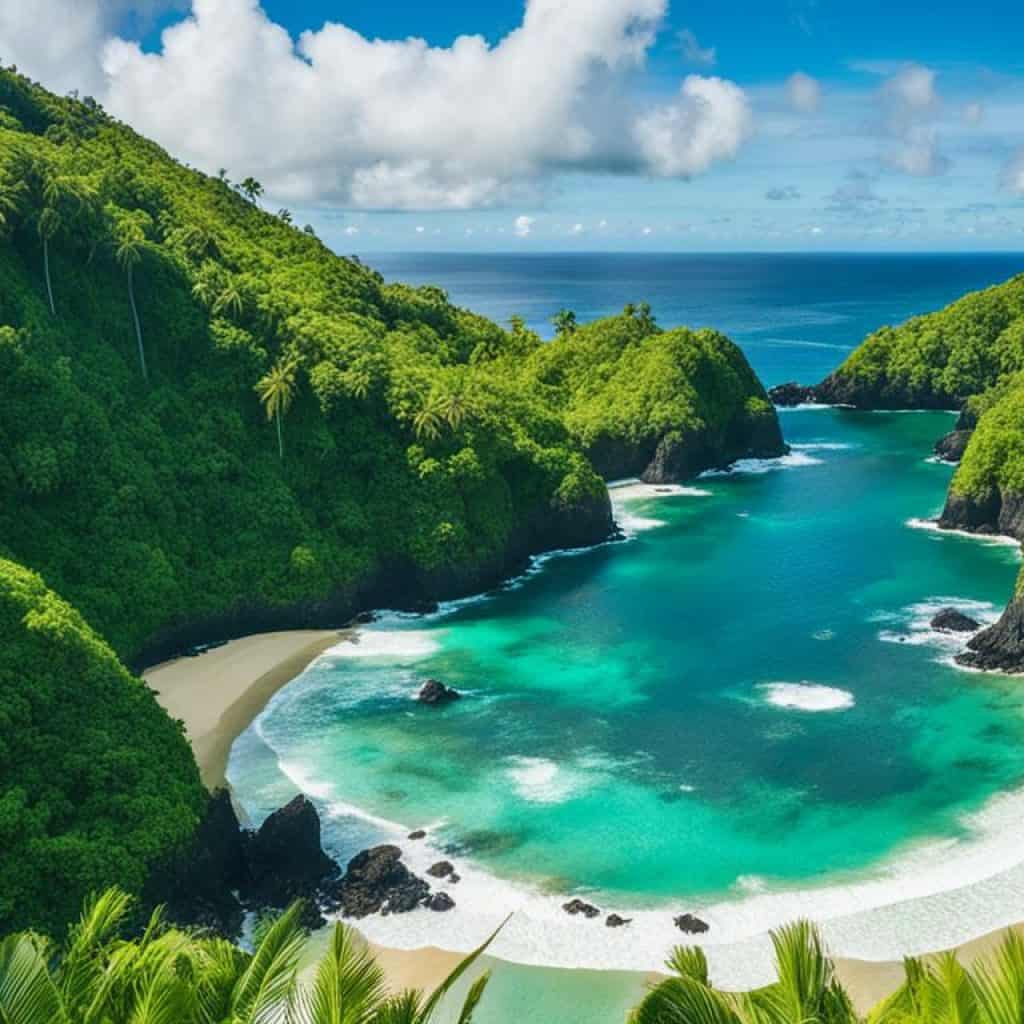
Conclusion
Catanduanes, the enchanting island province in the Philippines, offers a captivating blend of natural beauty, rich culture, and warm hospitality. Its stunning beaches, majestic waterfalls, and diverse flora and fauna make it a paradise for nature lovers. With its historical churches and cultural sites, Catanduanes also provides a glimpse into the rich heritage of the province.
Whether you’re in search of adventure, relaxation, or cultural immersion, Catanduanes has something to offer. Explore the picturesque beaches, go surfing at Puraran Beach, or embark on a refreshing hike to Maribina Falls. Discover the unique and mouthwatering local delicacies that reflect the island’s abundant resources.
Plan your trip to Catanduanes, the “Land of the Howling Winds,” and embark on an unforgettable journey. Immerse yourself in the stunning landscapes, embrace the warmth of the locals, and create enduring memories. Catanduanes awaits, ready to enchant and captivate every traveler who seeks its hidden wonders.
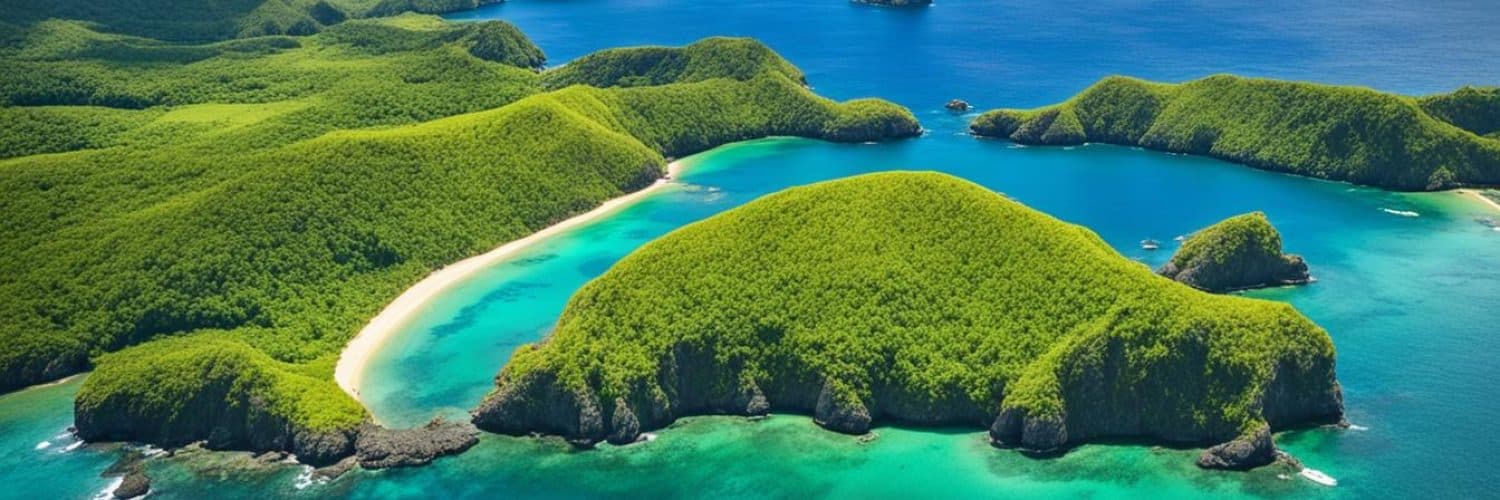

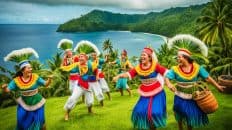
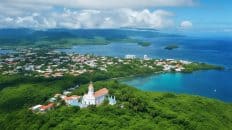














Add comment